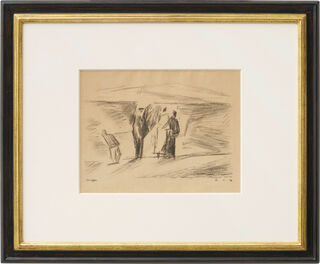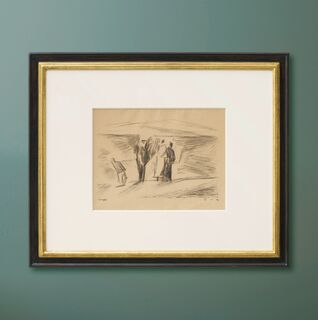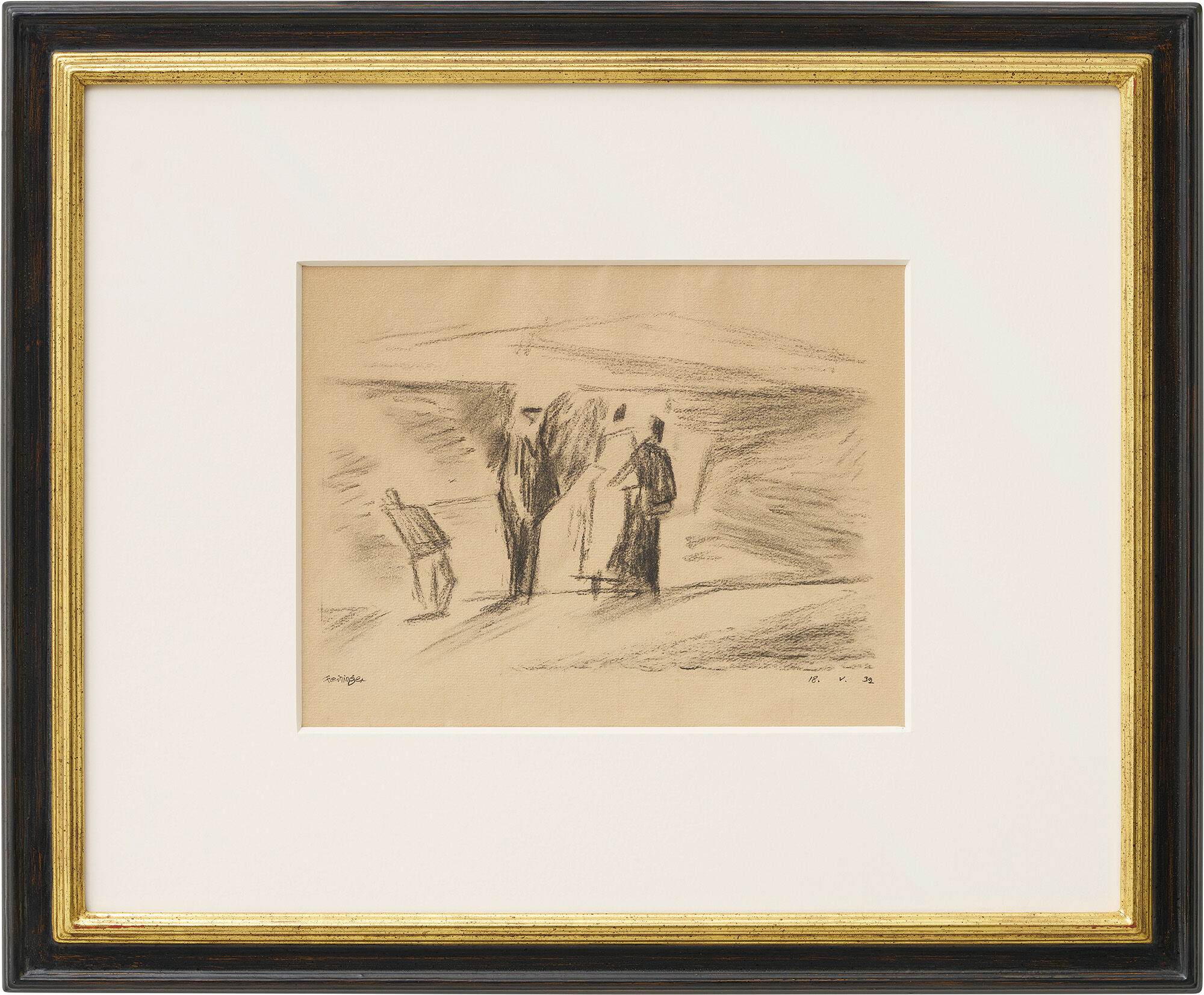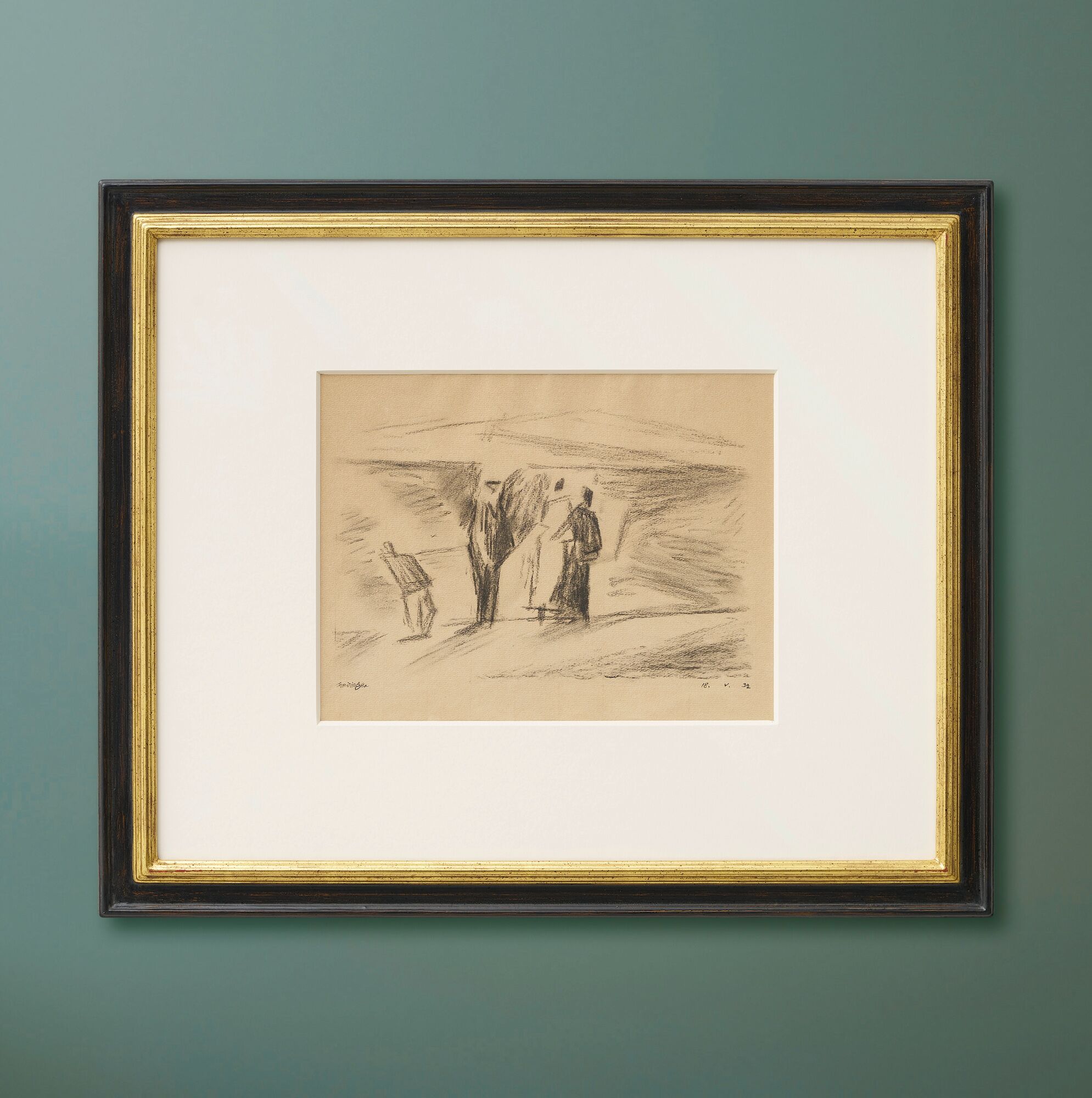Picture "People" (1932) (Unique piece)


Picture "People" (1932) (Unique piece)
Quick info
unique piece | signed | dated | charcoal on paper | framed | size 47.5 x 58 cm
Detailed description
Picture "People" (1932) (Unique piece)
The drawing "People", created in 1932, was produced during an incredibly difficult time for Lyonel Feininger. Under pressure from the National Socialists, the Bauhaus in Dessau, where Feininger taught, was closed in 1932. Like many of his friends and colleagues, Feininger was then forced to relocate and find increasingly difficult means of support elsewhere.
The artist lived with his wife Julia in the seaside resort of Deep on the Baltic coast and in Berlin. During this time, he worked little and felt increasingly isolated and alienated. Amid the growing unrest in the world around him, his work by the sea provided a welcome refuge.
The present work shows a group of several figures on the beach. The horizon line between the sea and the sky is diffusely recognisable. The expression of the people on the shore, completely exposed to the power and vastness of nature, can be compared to the poignant human presence in the works of the artist Caspar David Friedrich.
For Feininger, however, there is another layer of meaning, that of a joyful, albeit romanticised, picture of individualistic freedom.
Charcoal on paper, 1932, signed and dated. With a certificate from Achim Moeller, The Lyonel Feininger Project LLC. Motif size/sheet size 23.5 x 30.2 cm. Size in frame 47.5 x 58 cm as shown.
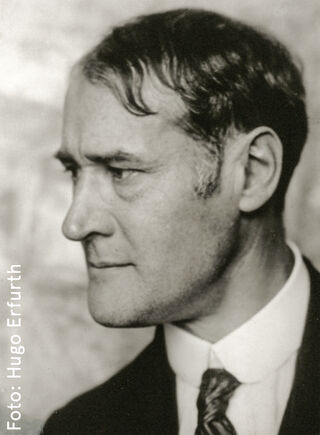
About Lyonel Feininger
1871-1956
Lyonel Feininger is known for his depictions of streets, cities and ships, which are composed of prismatically broken forms and inspired by Cubism and the art of Robert Delaunay.
The painter and graphic artist was born in New York in 1871 as the son of German musicians. He first came to Germany at the age of 16 for a concert tour of his parents and stayed there to study at the Hamburg School of Applied Arts and later at the Royal Prussian Academy in Berlin. After a study visit to Paris, he continued living and working for many years in Germany, where he was close to the "Blauer Reiter" artists' group. Starting in 1919, he made his mark as a master for the graphic workshops of "Bauhaus" in Weimar, Dessau and Berlin.
Feininger, along with Schlemmer, most explicitly realised the Bauhaus ideal of order. For him, the starting point is not the human figure but architecture, the strict geometric structure of forms that he observed in Gothic churches. His studies of the architecture of small German towns established his light-flooded, prismatic style, which was to become a model for many artists.
Feininger first devoted himself to German townscapes and churches. During the National Socialist era, the Nazi Party officially declared Feininger’s work to be "degenerate", which forced him to return to New York in 1937. There he created his famous impressions of the architecture of Manhattan and New York.
Depiction of typical scenes from daily life in painting, whereby a distinction can be made between peasant, bourgeois and courtly genres.
The genre reached its peak and immense popularity in Dutch paintings of the 17th century. In the 18th century, especially in France, the courtly-galant painting became prominent while in Germany the bourgeois character was emphasised.
A one-of-a-kind or unique piece is a work of art that has been personally created by the artist. It exists only once due to the type of production (oil painting, watercolours, drawing, etc.).
In addition to the classic unique pieces, there exist the so-called "serial unique pieces". They present a series of works with the same colour, motif and technique, manually prepared by the same artist. The serial unique pieces are rooted in "serial art", a type of modern art, that aims to create an aesthetic effect through series, repetitions and variations of the same objects or themes or a system of constant and variable elements or principles.
In the history of arts, the starting point of this trend was the work "Les Meules" (1890/1891) by Claude Monet, in which for the first time a series was created that went beyond a mere group of works. The other artists, who addressed to the serial art, include Claude Monet, Piet Mondrian and above all Gerhard Richter.

